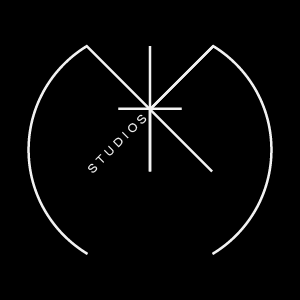3: Half-time Talk
What I’ve Learned After Publishing 30 Photo Sets
I’ve now published 30 photo sets and have 30 more planned. This halfway milestone feels like a moment worth reflecting on. Not just to take stock, but to sharpen how I move forward. What follows are the lessons I’ve learned, the mindset shifts I’ve had, and the creative clarity I’m gaining.
1. Create Before You Master
It’s never been easier to create. The tools available today—cameras, editing software, AI assistants—are powerful and accessible. In fact, they’re often more capable than my own skillset. That used to intimidate me.
When I restarted my creative journey, I was overwhelmed by what I could do but didn’t yet know how to do. What got me through it was this: I stopped trying to master every tool. Instead, I focused on outcomes. I learned just enough to create what I needed for the next photo set or video.
After 30 sets, I still feel like I’m barely scratching the surface. But the process has made me more confident. I now trust that the next 30 sets will make me better—and that’s enough.
Don’t wait to master the tools. Let creating be the way you learn.
2. The Algorithm Isn’t the Audience
We live in a time when distribution is trivial. Post a photo or video, and potentially billions of people can see it. But that “potential” is an illusion. Your content is first filtered by an algorithm—and that algorithm decides whether anyone sees it at all.
These platforms optimize for attention. That means if you want visibility, you have to create in a way that feeds the algorithm. You need to produce content that’s optimized for clicks, shares, watch time.
That’s not the game I want to play. I create because I love it. Not because I want to reverse-engineer virality. I’m lucky that I don’t depend on content creation for a living. I can afford to post what I want, when I want, where I want—even if the algorithm never picks it up.
But many creators don’t have that luxury. They’re hustling for attention in a crowded feed, often putting marketing ahead of art. They’re forced to optimize, reformat, and sometimes compromise.
I want to stay independent. I’d rather create from a place of joy than bend to an algorithm I don’t believe in.
3. Intention vs. Validation
That said, I’m not immune to wanting validation. There’s a part of me that wants the effort I put into creating to matter. That wants to know the time, money, and energy I pour in is doing something. That people are seeing it, feeling something, maybe even following along.
That’s made me more intentional.
I still want to create freely, but I also want to make it easier for my audience—whoever they are—to discover me. I don’t want to trick the algorithm, but I also don’t want to hide behind it. I need to present my work clearly and thoughtfully.
That means doing a few things better:
A stronger hook. I currently use hand-drawn illustrations as the opening for each set. They’re personal, but maybe not ideal as an introduction. For someone new to my work, the photography should be front and center.
A compelling story. Once I’ve caught someone’s attention, I need to hold it. Storytelling isn’t optional—it’s essential.
A clear call-to-action. If someone enjoys what I post, I should invite them to follow me, visit my website, or engage more deeply.
Creative freedom and strategic thinking don’t have to be opposites. I want to create with heart and with intent.
4. Still Frames, Moving Stories
Let’s face it—motion wins.
Movies reach more people than galleries. Motion delivers dopamine. Social media thrives on it. As a photographer, that’s a tough reality. But it’s also an opportunity.
Photography is my craft, but storytelling is my purpose. And stories in motion—videos, reels, vlogs—can often reach further and connect deeper than stills alone.
I’ve already started experimenting with vertical short-form videos. Now I’m beginning to explore horizontal formats too, where I can shape narrative more fully. I want to learn the language of cinematography—not to abandon stills, but to expand what I can express.
I’ll always be a photographer. But motion helps me become a better storyteller.
5. Patterns in the Feed
I’ve spent time observing what works in the photography world on Instagram and YouTube. Some patterns emerge, and I want to use them—not copy them, but remix them in my own way.
On Instagram, most posts fall into five formats:
Stories: Sequences of photos that tell a narrative.
Before/After: Showcasing editing skills through transformations.
What I see vs. What I shoot: Highlighting vision and framing.
Photos by genre: Focusing on a theme like macro, street, black & white.
How-to: Educational content about shooting or editing techniques.
On YouTube, the list is even tighter:
POV photowalks: First-person videos of photo shoots and results.
Tutorials: Gear reviews, editing walkthroughs, technique breakdowns.
Travel vlogs: Documenting trips through photography and narrative.
These aren’t limitations. They’re starting points. Understanding what resonates helps me experiment more intentionally. I want to borrow these structures—but always add my own voice, perspective, and meaning.
You don’t need to reinvent the format. You just need to be unmistakably yourself within it.
Final Thoughts
30 sets in, I’ve gained momentum. But more importantly, I’ve gained clarity. I know what excites me, what I want to improve, and what I want to stand for.
The next 30 sets will build on this. They’ll be more intentional. More experimental. More me.
Thanks for following along.
